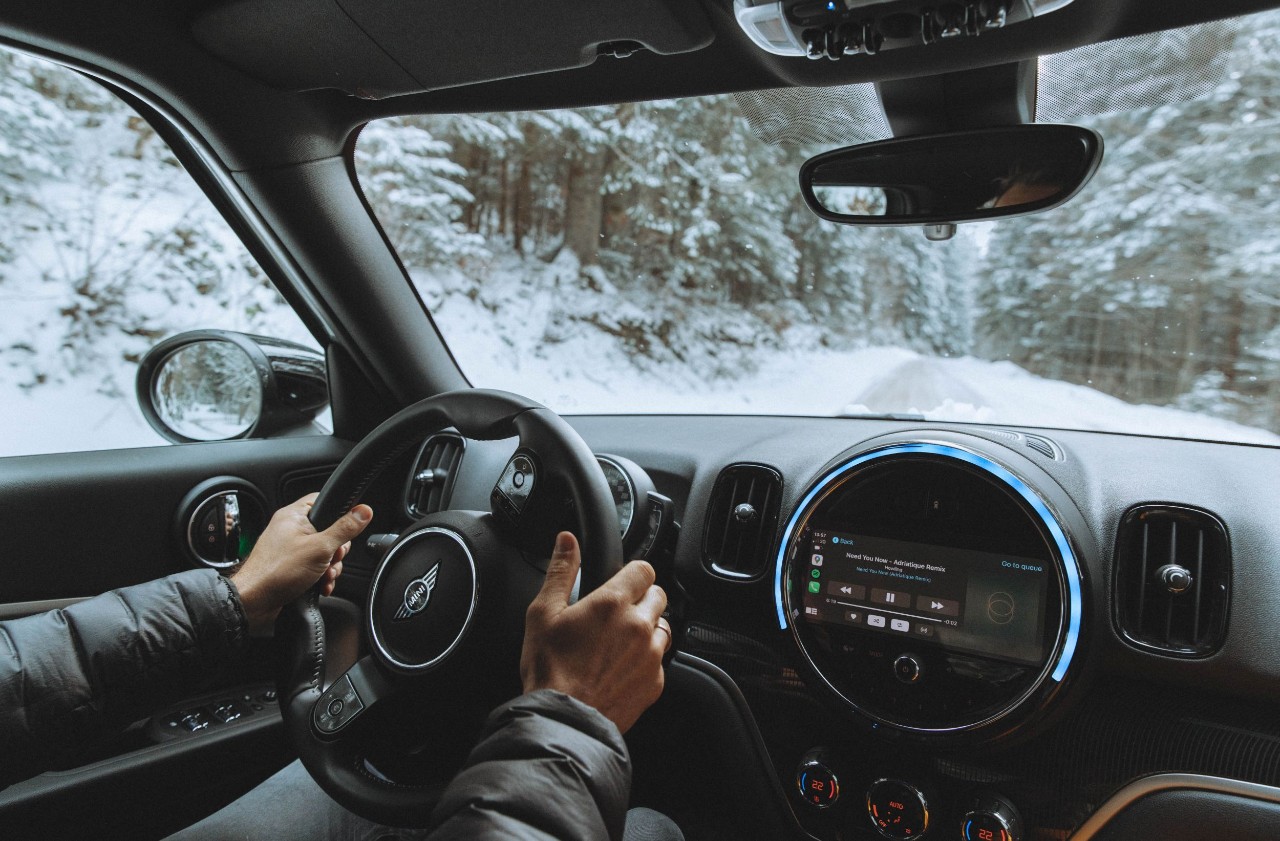Top tips for safer driving
Plan your journey and keep a torch, blanket, ice-scraper, small shovel, suitable shoes or boots and clothing, de-icing fluid and a supply of winter grade screen wash fluid in the vehicle. It’s advisable to have some food and drink, including a flask, for the journey. Tell friends or family where you’re going, which route you’re taking, and when you expect to arrive.
Don’t use warm or hot water to clear your windows of ice – the sudden change in temperature could crack the glass. Never set off if you haven’t completely de-iced your windows, lights and mirrors. Driving with just a ‘porthole’ of clear glass in a frosty windscreen isn’t only dangerous, it’s illegal. Don’t leave your vehicle unattended with the engine running to de-ice it as you may attract unwanted attention from opportunist thieves. It’s also a good idea to remove snow from the bonnet, bootlid and roof to be on the safe side.
Make sure your vehicle has enough fuel or is charged sufficiently for your journey. Bear in mind you may get stuck in winter weather. Always take a fully-charged mobile phone with you, and ensure you have a working charger.

Driving in rain and snow
Driving safely in wet weather is a concern for every driver. It takes just six inches of fast-flowing water to knock you off your feet, while a foot of water is enough to float a vehicle. In short, water presents huge hazards to motorists. If you are caught in snow, drive with due respect to the conditions, reduce speed and allow extra distance between you and the vehicle in front.
Tips for driving in wet weather
This will give you more time to react and reduce the chance of your vehicle sliding into trouble.
Drive on the highest section of road and use the kerb to gauge water depth.
Your vehicle can skid just as easily as on ice.
It’s illegal and dangerous behaviour that could have an impact on other drivers.
Standing water or a gust of wind could cause bikers to veer across the road.
Use the rear lights only during daylight to avoid rear dazzle.
Comprehensive policies should cover you but you may not be protected if you park in high-risk areas or a flooded street.
Stopping distances more than double in the wet. Approximate distances for a vehicle with at least 8mm of tyre tread are shown below. With 3mm of tread, add around 10 metres at each speed -
Speed (mph) Stopping distance (m)
30 Dry: 23 Wet: 46
60 Dry: 73 Wet: 146
70 Dry: 96 Wet: 196
Tips for driving in snow
Avoid any harsh acceleration which is likely to cause wheelspin. Pull away in second gear with manual transmission, or ensure the winter driving button is pressed with automatic transmission.
In a manual vehicle, or when driving an automatic, switch to manual gear selection. Use your brakes lightly and remember that ABS does not necessarily reduce your braking distance in snow and ice.
It's worth dropping well back or waiting until it’s clear of traffic before moving off so you won’t have to stop part-way up. Maintain a constant speed and try to avoid changing gear on the hill.
Daytime running lights won’t be enough, and there’ll be no lighting at the back of your vehicle. Regarding rear fog lights, follow the advice under 'Tips for driving in wet weather' (as detailed above).
Just because the conditions might have improved on main roads, country roads or bridges might still be hazardous due to less traffic or because they’ve not been gritted.
Black ice is a thin layer of ice on the road surface that’s usually transparent and caused by rain or dew gathering on frozen surfaces, particularly in the morning. Because it’s difficult to see, it is one of the biggest dangers of winter driving. It tends to form on parts of the road that don’t get much sun, such as tree-lined routes and tunnels, as well as on bridges and the road beneath overpasses. Slow right down for corners if you suspect it and keep your driving as smooth as possible.
Tips for maximising your EV’s range in cold weather:
This will help it maintain a full charge. If your vehicle has a pre-conditioning feature, engage it (usually via a smartphone app) to heat both the interior and the battery pack while the vehicle is plugged in.
Seat and steering wheel heaters are much more efficient than air heaters. When the car is already warmed up, these heaters alone can keep you and your passengers comfortable—assuming all occupied seats are equipped with seat heaters.
This adjusts performance parameters to preserve battery range, be sure to engage it and try to limit your speed while driving in the cold to preserve charge.
Set it to full force to send as much charge back to the battery as possible when deployed; for example when coming to a stop.
Do this on your route in case you run unexpectedly low on charge. Look for DC (direct current) Fast Charging units that can bring an electric vehicle’s battery back up to 80% of its capacity in 10-45 minutes, depending on the vehicle and the ambient temperature.


